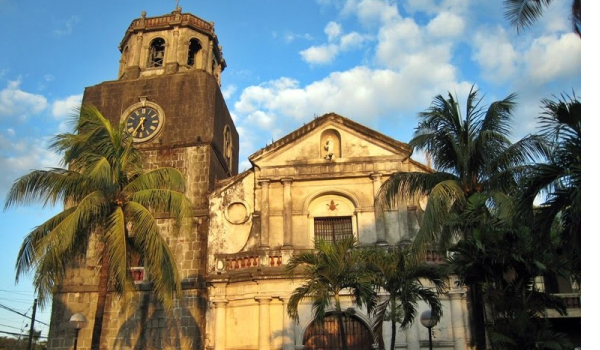In a land area of about 80 square kilometers, the diocesan territory covers the cities of Pasig, Taguig and the municipality of Pateros
Population
The total population of the area is 1,639,697 at end of 2016. Taguig has one of the largest Muslim communities in Metro Manila.
Language
The languages used in the diocesan territory are English, Pilipino. Muslims speak their tribal languages (mostly Maguindanao in Taguig).
Transportation
There are different kinds of transportation modes in the region: Jeepneys, mini-buses, tricycles, taxi cabs
- To and from adjoining areas and Manila: jeepneys, buses (not air-conditioned) - fares based on distance traveled. Buses generally take the main roads and jeepneys, the secondary roads.
- Connecting to the rest of Metro Manila: - Main route: via EDSA Central, a commercial complex at the corner of EDSA and Shaw Boulevard, where and buses (air-conditioned or not) and jeepneys bound for all directions abound as well as taxi cabs.
- In addition to buses and jeepneys, air-conditioned vans that charge fixed rates regardless of distance. Bound for EDSA Central or Quiapo in Manila
Economy
The average family income in Metro Manila is Philippine Pesos 266,446 per year (USD 5,420 as of Dec 2008) (total income of P610,960 million divided by 2,293 million total number of families)
Source: National Statistics Office, Income and Employment Division. Data as of 2003 (surveys are held every five years, budget permitting)
Rapid urbanization both in and outside Metro Manila, reaching new heights in the last three decades, led to the loss of many industries. The diocese is a mix of residential and commercial areas:
- Malls and commercial centers
- Commercial, light manufacturing, and warehouse establishments
- Small and medium-scale businesses such as computer shops, machinery and repair shops, variety stores, groceries, laundry shops, food vending, pawnshops, gyms, health and beauty salons and spas, public markets, department stores
- Apartment houses and restaurants
- Recreational facilities like badminton and tennis courts, movie houses
- Manufacturing industries - e.g., food processing. Taguig - Food Terminal, Inc. processing center for food exports (e.g., meat products, seafood, fruits). But many production/ manufacturing entities moved to Calabarzon - e.g., textile mills, traditional Chinese pottery
- Pateros - Has retained a traditional cottage industry: alfombra - velvet slippers (simple thongs for men, intricately beaded or embroidered for women) - Has lost much of another traditional industry: duck raising and related industries (balot-making) - moved to Laguna (more open space, lower operating cost)
The diocese, especially Taguig, has both extremes of the economic spectrum: one of the plushest economic locations in Metro Manila (Bonifacio Global City), as well as some of the poorest communities, including a large Muslim community.
Telecommunication
Metro Manila -- Globe, Smart cellular networks.
Area franchises for landlines: Philippine Long Distance Telephone, Smart, Globe, Bayantel.
Radio, cable and regular television networks.
Education
- The literacy rate for Metro Manila is
- Simple literacy - read and write 99.0 percent
- Functional literacy - read and write plus compute 94.6 percent
- Source: National Statistics Office, Demographic and Social Statistics Division. Data as of 2003.
Culture
- Pateros has retained considerable tradition, including religious feasts and processions.
- Biggest procession in Pateros is St. Martha (although patron is St. Roque). Feast is July 29th but celebrated 2nd Sunday of February to avoid the rains. St. Martha for Pateros natives is not the busy homemaker but the warrior that slays crocodile (holding sword over dead crocodile's head).
- Some concern to retain the Palm Sunday tradition of laying out long cloths on streets for procession commemorating Jesus' triumphant entry to Jerusalem - begun by Catholic Women's League (1960s). Survival of this tradition now depends on younger groups.
Traditional Filipino culture is a mix of Malay, Spanish, and Chinese.
Strong American influence led to present highly urbanized and Westernized state. Pilipino is the national language, yet English is the official language used in business and government and the medium of instruction in schools. Contemporary music is an easy mix of Filipino and Western elements. Apart from Pateros, native culture has generally been relegated to special commemorations (e.g., Independence Day, Linggo ng Wika).
